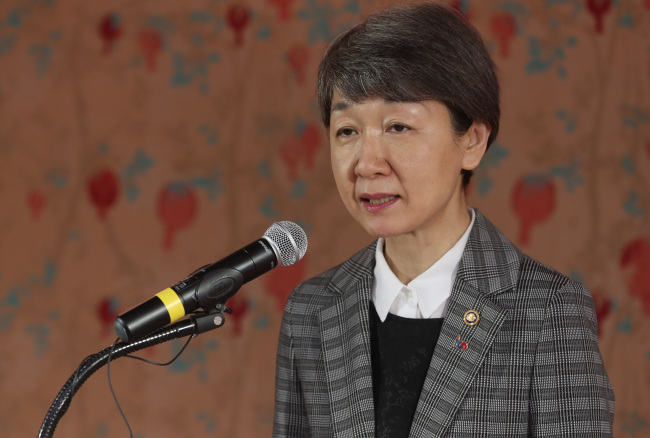Preservation, promotion of cultural heritage among key plans for S. Korea
By Yoon Min-sikPublished : March 13, 2019 - 16:25
The Cultural Heritage Administration on Wednesday laid out its plan for the year, centered on strategic goals of preserving and promoting the country’s legacy here and abroad to create jobs and boost local tourism.
Other goals for the state-run agency includes making headway in plans for inter-Korea archaeological excavation and research of ancient Korean kingdoms based in territory currently occupied by North Korea.
In a press briefing, the state-run agency said it plans to improve the repair and maintenance system for cultural heritage.
Other goals for the state-run agency includes making headway in plans for inter-Korea archaeological excavation and research of ancient Korean kingdoms based in territory currently occupied by North Korea.
In a press briefing, the state-run agency said it plans to improve the repair and maintenance system for cultural heritage.

According to CHA, it will expand the internet of things technology applied in preserving cultural heritage -- currently in use at three heritage sites -- to 32 sites. For large areas and areas hard to get to, such as mountains, drones will be used.
The plan also includes increased security personnel and expanding the use of surveillance and infrared cameras on 75 percent of sites, up from the current 69 percent.
South Korea has been upping efforts to preserve its treasures, particularly after the infamous arson in 2008 that burned down the country’s National Treasure No. 1 Namdaemun. It was rebuilt and reopened five years later with increased security.
A committee will be created within CHA to examine the plans for repairing relics and to supervise the process.
In keeping with the plan released previously by the Ministry of Culture, Sports and Tourism, CHA vowed to pursue further cooperation with North Korea on culture-related projects.
They include carrying out another segment of the joint excavation of Manwoldae, where the royal palace of Goryeo Kingdom (918-1392) once stood. The joint dig is considered crucial to understanding the royal lifestyle of the ancient kingdom, but was put on hold in 2015 after inter-Korea relations took a turn for the worse.
It resumed last year after the South and North Koreas begin seeing eye to eye after their joint participation in the 2018 PyeongChang Winter Games and subsequent summit.
Despite the collapse of the recent US-North Korea summit in Hanoi, CHA vowed that joint projects in the field of cultural heritage will contribute greatly to foster peace on the peninsula.
Other joint projects include studying relics in the Demilitarized Zone -- the de facto border between the Koreas -- and excavation and research of sites related to the Goguryeo Kingdom (37-668) in Pyongyang, and study of Tristram’s woodpecker.
South Korea will also expand official development assistance to include the Arab world, and spend 500 million won ($442,000) -- up from 100 million won -- to repatriate Korean artifacts located outside the country.
It will step up efforts to promote Korea’s heritage to the rest of the world, namely through its goal to have its Confucian academies -- called “seowon” -- added to the UNESCO World Heritage list.
Part of the plan to preserve intangible cultural heritage is the project to restore the legacy of Korea’s independence movement. This will include artifacts related to the independence movement outside the peninsula, and those related to Korea’s provisional government.
Homes of independence activist Han Yong-un and 20 other relics will be registered as cultural heritage, while sites, such as Seodaemun Prison History Hall will be restored to its original form.
By Yoon Min-sik
(minsikyoon@heraldcorp.com)








![[KH Explains] Hyundai's full hybrid edge to pay off amid slow transition to pure EVs](http://res.heraldm.com/phpwas/restmb_idxmake.php?idx=644&simg=/content/image/2024/04/18/20240418050645_0.jpg&u=20240419100350)







![[From the Scene] Monks, Buddhists hail return of remains of Buddhas](http://res.heraldm.com/phpwas/restmb_idxmake.php?idx=652&simg=/content/image/2024/04/19/20240419050617_0.jpg&u=20240419175937)

![[KH Explains] Hyundai's full hybrid edge to pay off amid slow transition to pure EVs](http://res.heraldm.com/phpwas/restmb_idxmake.php?idx=652&simg=/content/image/2024/04/18/20240418050645_0.jpg&u=20240419100350)

![[Today’s K-pop] Illit drops debut single remix](http://res.heraldm.com/phpwas/restmb_idxmake.php?idx=642&simg=/content/image/2024/04/19/20240419050612_0.jpg&u=)